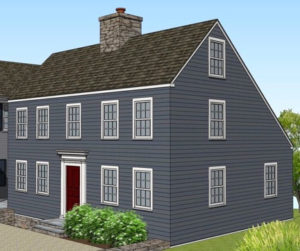Tod’s Driftway
The road out of the Park is called Tod’s Driftway. Originally, this was a sand bar (tombolo) connecting the mainland to the islands. In 1892, the Ferris family granted a formal easement to Tod to construct and maintain a permanent roadway across it. However, only after he purchased the last 11 acres of his estate that included this property in 1900 did he built a causeway using fill brought by barge from the New York City subway project.
Greenwich Cove Casino

As you exit the Park, you will quickly come to a private beach on the right. Directly opposite this beach is 3 Tod’s Driftway. The distinctive front porch featuring sizeable boulders was originally the Greenwich Cove Casino. Henry J. Lucas, a land developer from Mt. Vernon, NY, enjoyed weekends by the shore and built the casino in the 1890s as a place for social gatherings. He also developed the adjoining neighborhood known as Lucas Point. (In fact, this part of the roadway is actually on private property.) The structure was also briefly used as a clubhouse for the Innis Arden Golf Club before its disbanding around 1904.
Fortunately, one hundred years later, in 2005, the Bass family bought the house and renovated the structure rather than tearing it down. They were able to save the porch and the first-floor ballroom after some significant re-engineering.
Feake-Ferris House

A few hundred yards farther inland at 139 Shore Road sits the Feake-Ferris House, which was built in 1645 on the land purchased by Elizabeth Feake. It is now considered to be the oldest existing house in Greenwich. In 2016, the Greenwich Point Conservancy responded to a demolition notice posted on the house by forming an alliance with the Leuter family, who were wishing to sell, and the Waters family, who were looking to buy, to preserve this historic home.